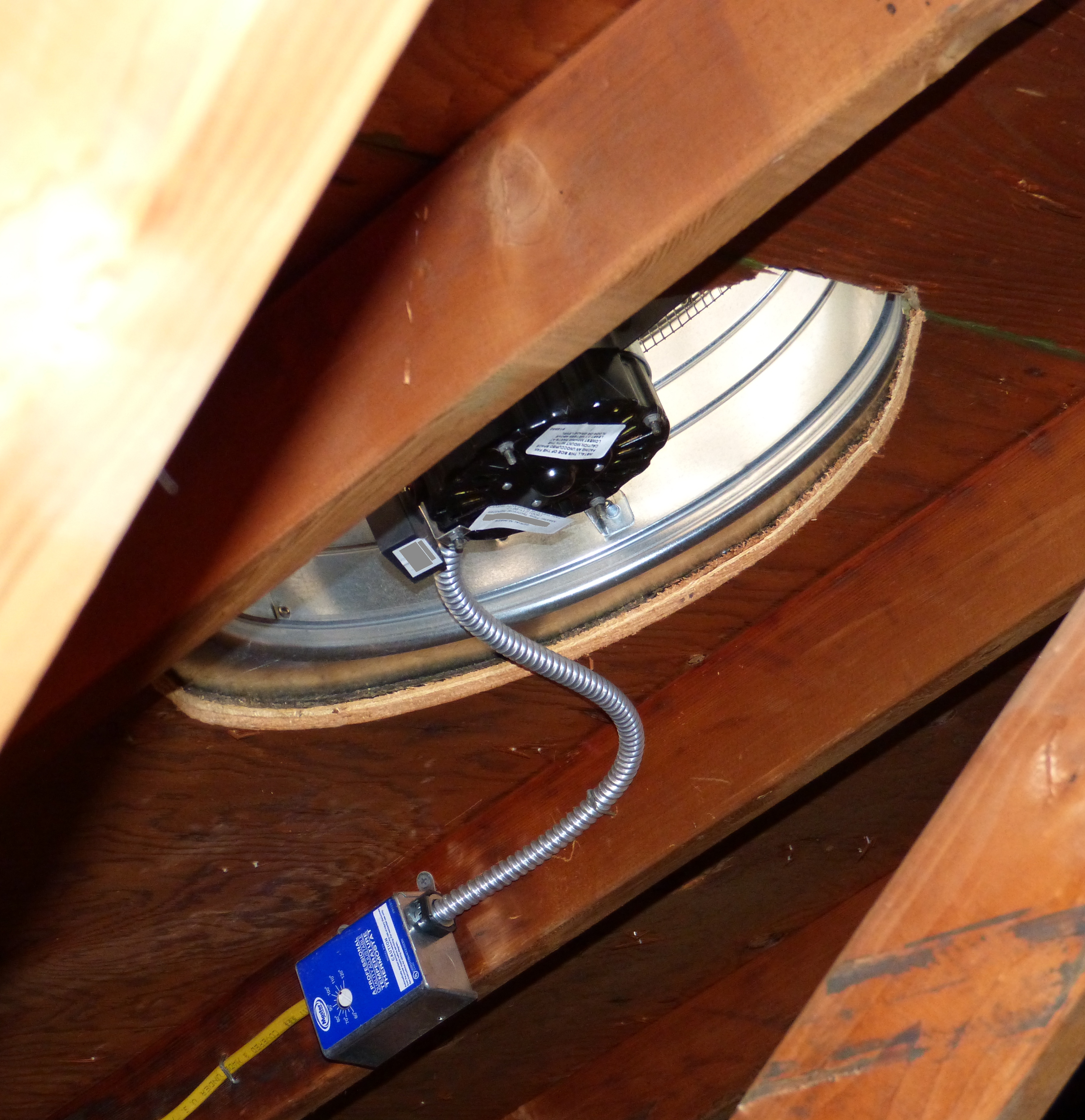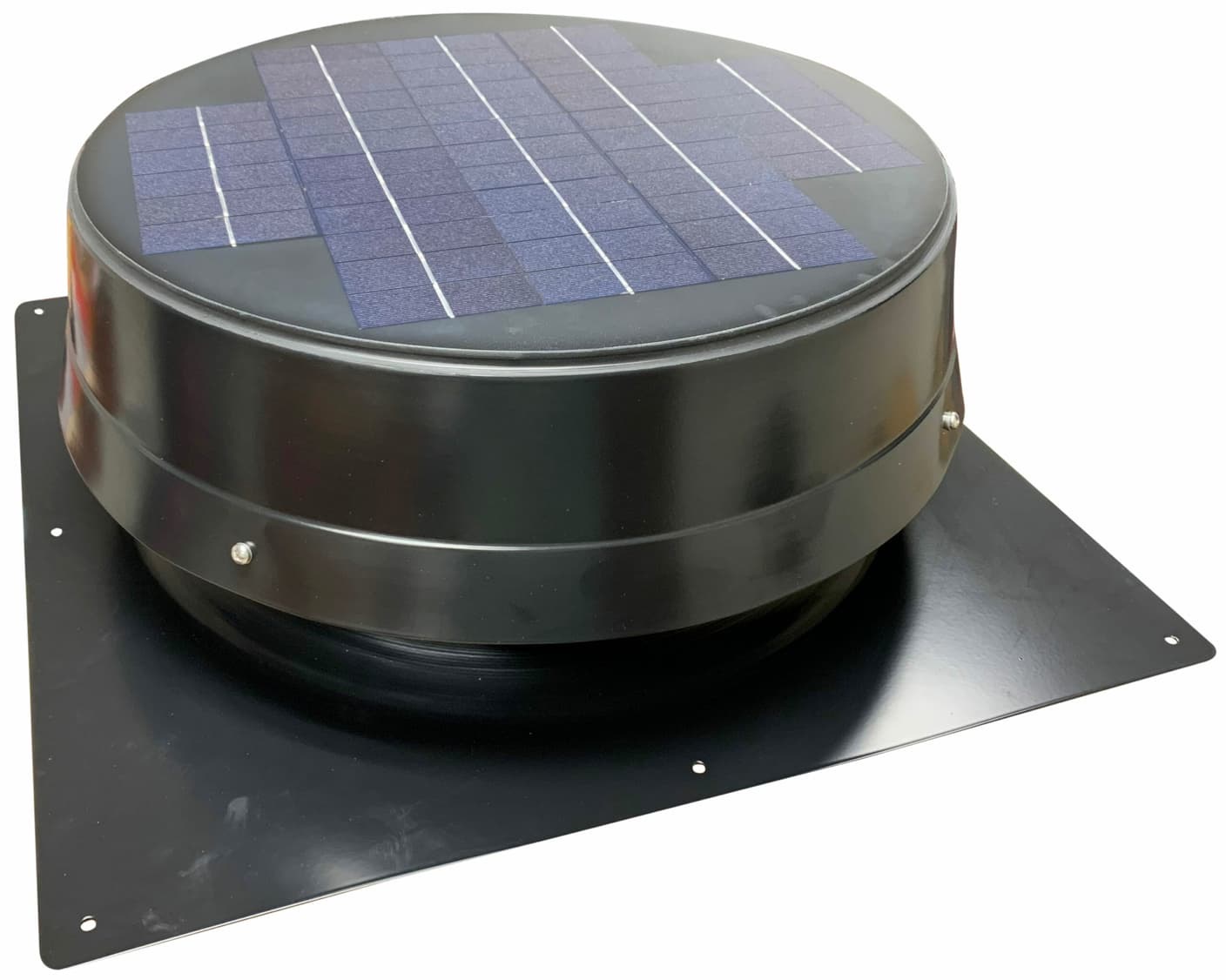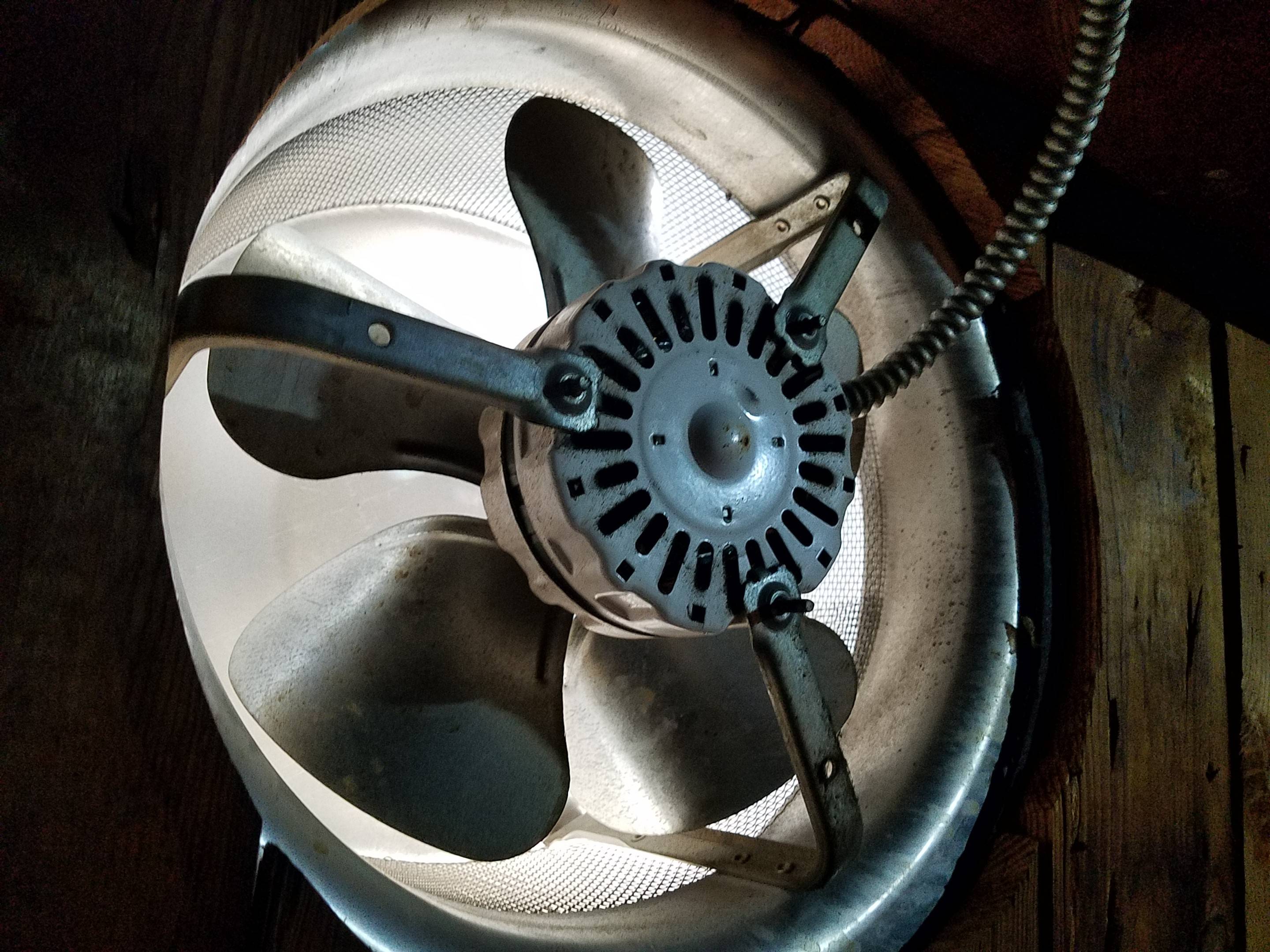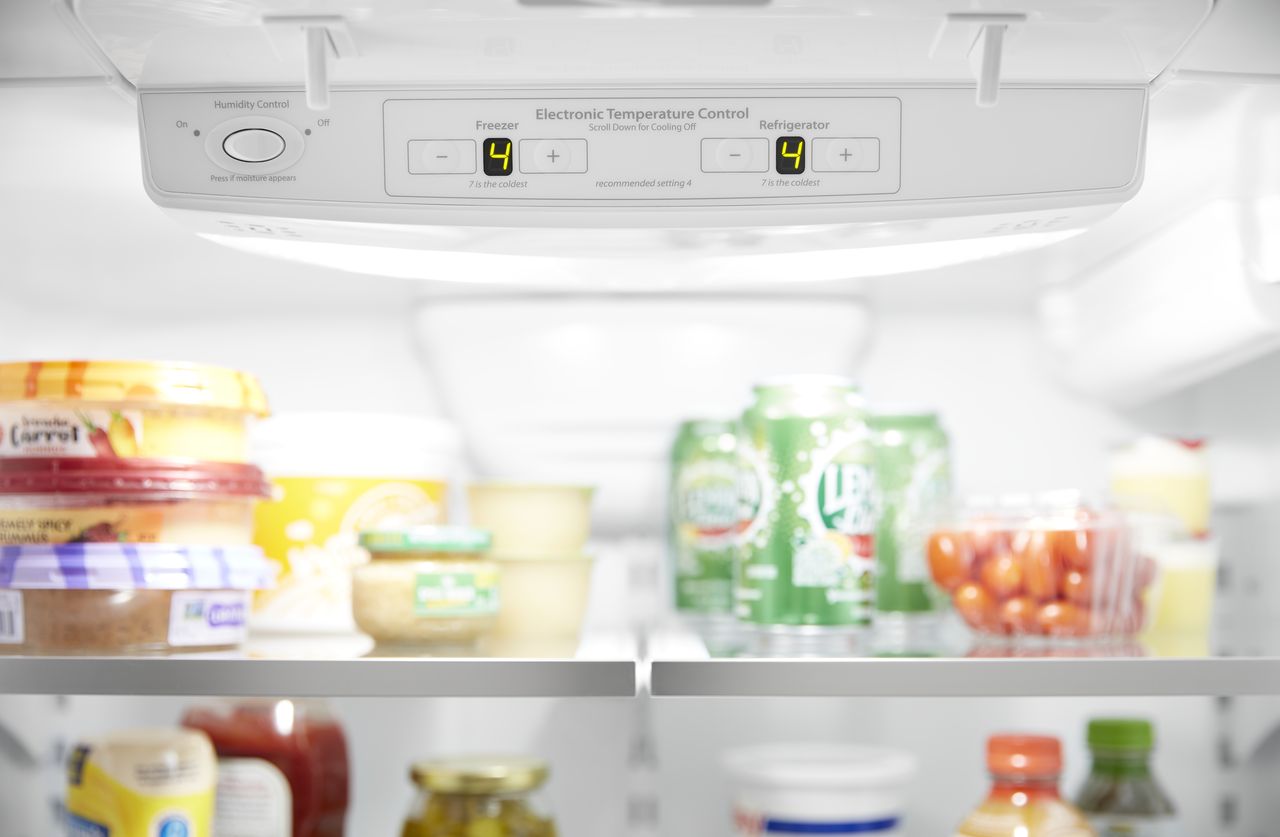Home>Articles>What Temperature Should An Attic Fan Be Set At


Articles
What Temperature Should An Attic Fan Be Set At
Modified: May 6, 2024
Properly set the temperature of your attic fan to optimize ventilation and energy efficiency. Find helpful articles on what temperature to adjust your fan to for maximum benefits.
(Many of the links in this article redirect to a specific reviewed product. Your purchase of these products through affiliate links helps to generate commission for Storables.com, at no extra cost. Learn more)
Introduction
Attic fans play a vital role in maintaining a comfortable and energy-efficient home environment. They help regulate the temperature in the attic, preventing heat buildup and reducing the strain on your HVAC system. One crucial factor in ensuring the optimal performance of an attic fan is setting the right temperature. By finding the ideal temperature range for your attic fan, you can improve its efficiency and extend its lifespan.
In this article, we will delve into the various aspects of setting the temperature for an attic fan. We will explore the benefits of proper temperature control and discuss the factors to consider when determining the right settings. By the end, you will have a clear understanding of how to optimize your attic fan’s temperature for maximum effectiveness.
Key Takeaways:
- Setting the right temperature for your attic fan is crucial for energy efficiency, preventing overheating, controlling moisture, and extending the fan’s lifespan. Consider climate, insulation, and fan size for optimal performance.
- Avoid common mistakes such as setting the temperature too low or too high, neglecting climate and insulation considerations, ignoring manufacturer recommendations, and failing to monitor and adjust as needed. Optimize your attic fan’s temperature for maximum effectiveness.
Understanding Attic Fans
Before delving into the specifics of setting attic fan temperatures, it is essential to have a basic understanding of how these fans work. Attic fans, also known as attic ventilators, are installed in the attic space of a home to improve air circulation and ventilation.
Attic fans are typically powered by electricity and come in various types, including roof-mounted fans, gable-mounted fans, and solar-powered fans. These fans work by drawing in fresh outside air and expelling hot, stagnant air from the attic. By doing so, they help regulate the temperature, reducing heat buildup and preventing moisture-related issues like mold and mildew.
The primary purpose of an attic fan is to remove excessive heat from the attic space. During hot summer months, attics can reach incredibly high temperatures, which can transfer heat into the living areas below. By effectively ventilating the attic, attic fans can help keep the entire house cooler and more comfortable.
Additionally, attic fans can also help prevent a phenomenon known as “ice damming” during winter months. When warm air rises from the living spaces into the attic, it can cause snow on the roof to melt. This melted snow can then refreeze near the roofline, leading to ice dam formation. Attic fans help maintain consistent temperature and airflow in the attic, reducing the likelihood of ice dams forming and potentially causing damage to the roof and gutters.
It is important to note that attic fans work in conjunction with proper insulation and air sealing. Insulating the attic and sealing any air leaks will help maximize the effectiveness of the attic fan and improve overall energy efficiency in the home.
Now that we have a basic understanding of attic fans and their role in maintaining a comfortable home environment, let’s explore why setting the right temperature is crucial for their optimal performance.
Importance of Setting the Right Temperature
Setting the right temperature for your attic fan is paramount for several reasons. It not only ensures the efficient operation of the fan but also helps maintain the optimal conditions in your attic. Here are some key reasons why setting the right temperature is important:
1. Energy Efficiency:
By setting the temperature correctly, you can achieve a balance between energy usage and cooling effectiveness. If the temperature is too low, the fan may operate unnecessarily, resulting in increased energy consumption. On the other hand, if the temperature is set too high, the fan may not kick in when needed, allowing heat to build up in the attic. Finding the right temperature range ensures that the fan operates efficiently, saving energy and reducing utility costs.
2. Prevents Overheating:
When an attic becomes excessively hot, it can lead to a range of issues. Overheating can cause damage to insulation, roofing materials, and electrical components in the attic. It can also affect the performance and lifespan of your HVAC system, as the excess heat puts additional strain on the system. By setting the attic fan temperature appropriately, you can prevent heat buildup and maintain a balanced and healthy attic environment.
3. Moisture Control:
Proper attic ventilation is essential for moisture control. When humidity levels rise in the attic, it can lead to the growth of mold, mildew, and rot. These issues not only compromise the structural integrity of your home but also pose health risks to you and your family. Attic fans help expel moist air, preventing condensation and reducing the chances of moisture-related problems. Setting the temperature correctly allows the fan to engage when needed, effectively controlling humidity levels.
4. Extends Fan Lifespan:
Overworking an attic fan due to an incorrect temperature setting can lead to premature wear and tear. By finding the optimal temperature range, you can ensure that the fan runs efficiently without being strained. This helps extend the lifespan of the fan, reducing the need for costly repairs or replacements.
By understanding the importance of setting the right temperature for your attic fan, you can optimize its performance, improve energy efficiency, and maintain a healthy attic environment. In the next section, we will explore the factors that should be considered when determining the ideal temperature for an attic fan.
Factors to Consider When Setting Attic Fan Temperature
Setting the attic fan temperature involves considering various factors to ensure the fan operates effectively and provides the desired results. Here are some key factors to consider when determining the ideal temperature for your attic fan:
1. Climate:
The climate in which your home is located plays a significant role in determining the attic fan temperature. If you live in a hot and humid climate, you may need to set a lower temperature to keep the attic cool and prevent heat buildup. On the other hand, if you reside in a cooler climate, you can set a slightly higher temperature to provide sufficient ventilation without overcooling the attic.
Read more: What Temperature Should A Kegerator Be
2. Attic Insulation:
The insulation level in your attic affects the fan temperature setting. Well-insulated attics require less cooling, as the insulation helps to regulate the temperature. If your attic is well-insulated, you may set the temperature slightly higher to allow the fan to activate only when necessary. However, if your attic has poor insulation or insufficient airflow, you may need to set a lower temperature to ensure proper ventilation and prevent heat buildup.
3. Size and Power of the Fan:
The size and power of your attic fan can influence the temperature setting. Larger and more powerful fans can move a greater volume of air and may require a higher temperature setting to initiate their operation. Conversely, smaller fans may need a lower temperature setting to kick in. It is essential to consult the manufacturer”s recommendations and specifications for your specific attic fan model to determine the appropriate temperature range.
4. Home Design and Construction:
The design and construction of your home can impact how heat is transferred to the attic. Factors such as roof type, attic ventilation, and the number and placement of vents can affect the attic temperature. Assessing these factors can help you determine the appropriate temperature setting for your attic fan.
5. Time of Day:
Considering the time of day is another essential factor when setting the temperature for your attic fan. During the hottest part of the day, you may want to lower the temperature to ensure the fan kicks in and helps control the heat. Conversely, during the cooler hours, you can raise the temperature to reduce unnecessary operation.
By taking these factors into account, you can determine the optimal temperature range for your attic fan. In the next section, we will discuss the recommended temperature range for attic fans and how to make adjustments.
Read more: What Temperature Should A Freezer Be
Recommended Temperature Range for Attic Fans
The recommended temperature range for attic fans typically falls between 100 to 110 degrees Fahrenheit (37 to 43 degrees Celsius). However, it is important to note that the exact temperature setting may vary depending on factors such as climate, insulation, and fan size.
Here is a general guideline for setting the temperature range for your attic fan:
1. Hot and Humid Climates:
If you live in a hot and humid climate, setting the temperature range between 100 to 105 degrees Fahrenheit (37 to 40 degrees Celsius) is recommended. This allows the fan to activate when the attic reaches a temperature that may cause heat buildup and discomfort in the living areas of your home.
2. Moderate Climates:
In moderate climates, where extreme heat is not as common, setting the temperature range between 105 to 110 degrees Fahrenheit (40 to 43 degrees Celsius) is generally sufficient. This range ensures that the fan engages when needed but prevents unnecessary operation during milder weather conditions.
3. Consider Insulation and Airflow:
When determining the temperature range, consider the insulation level and airflow in your attic. If you have excellent insulation and proper airflow, you can set the temperature towards the higher end of the recommended range. However, if your insulation is insufficient or there are airflow issues, it may be beneficial to set the temperature towards the lower end.
Read more: How Long Should An Attic Fan Run
4. Consult Manufacturer Guidelines:
It is important to refer to the manufacturer”s guidelines and specifications for your specific attic fan model. They may provide recommendations for the ideal temperature range based on their product’s design and capabilities.
Remember that these ranges are general guidelines, and adjustments may be required based on the unique characteristics of your home. Monitoring the temperature and evaluating the attic’s comfort level can help fine-tune the temperature setting for optimal results.
Now that we have established the recommended temperature range for attic fans, let’s explore how to adjust the temperature setting in the next section.
How to Adjust Attic Fan Temperature
Adjusting the temperature setting on your attic fan is a relatively simple task that can be done using the fan’s built-in thermostat or a separate temperature control device. Here are the steps to adjust the temperature:
1. Locate the Thermostat:
Locate the thermostat on your attic fan. In most cases, the thermostat is located on the fan housing or in the attic near the fan itself. Refer to the manufacturer”s instructions if you are unsure about the thermostat’s location.
2. Understand the Controls:
Familiarize yourself with the controls on the thermostat. Most attic fan thermostats allow you to adjust the temperature using a dial, switch, or digital interface.
Read more: What Should The Temperature Of A Hot Tub Be
3. Set the Desired Temperature:
Using the thermostat controls, adjust the temperature setting to the desired range for your attic fan. If your fan has a dial, turn it to the appropriate temperature setting. If it has a switch or digital interface, adjust the temperature using the provided buttons or controls. Refer to the manufacturer’s guidelines for specific instructions on how to set the temperature for your attic fan model.
4. Monitor and Fine-Tune:
After adjusting the temperature setting, monitor the attic temperature and observe the fan’s operation. Pay attention to whether the fan engages when the attic temperature reaches the set point and if it provides the desired cooling effect. Fine-tune the temperature setting if necessary to achieve optimal comfort and energy efficiency.
If your attic fan does not have a built-in thermostat, you can use a separate temperature control device. These devices, such as attic fan controllers, allow you to set the desired temperature range and automatically activate the fan when the attic temperature exceeds the set point.
It is important to periodically check and adjust the attic fan temperature setting as needed, especially during seasonal changes or extreme weather conditions. This ensures that the fan is operating at the most effective temperature range for optimal performance.
In the next section, we will discuss some common mistakes to avoid when setting the temperature for your attic fan.
Common Mistakes to Avoid when Setting Attic Fan Temperature
While setting the temperature for your attic fan, it is important to avoid certain common mistakes that can hinder the fan’s performance and efficiency. By being aware of these mistakes, you can ensure that your attic fan operates optimally. Here are some common mistakes to avoid:
1. Setting the Temperature Too Low:
One common mistake is setting the temperature too low. While it’s tempting to keep the attic as cool as possible, setting an excessively low temperature can cause the fan to run more frequently than necessary. This results in increased energy consumption and potential wear on the fan’s motor. Avoid setting the temperature too low and instead find a balance between cooling and energy efficiency.
Read more: What Temperature Should A Walk In Freezer Be
2. Neglecting to Consider Climate and Insulation:
Another mistake is neglecting to consider the climate you live in and the insulation level in your attic. Climate and insulation play a crucial role in determining the ideal temperature setting for your attic fan. Failing to take these factors into account may result in an inefficient temperature setting that does not effectively control the heat in your attic.
3. Setting the Temperature Too High:
While setting the temperature too low is a mistake, setting it too high can also have negative consequences. If the temperature is set too high, the fan may not activate when necessary, allowing heat to build up in the attic. This can lead to increased energy usage and potential damage to your attic and home. Avoid setting the temperature too high by finding the optimal range based on your climate and insulation.
4. Ignoring Manufacturer Recommendations:
Ignoring the manufacturer’s recommendations for your specific attic fan model is another mistake to avoid. Each fan model may have specific guidelines and temperature ranges that are best suited for its operation. Ignoring these recommendations may result in suboptimal performance and premature wear on the fan.
5. Not Monitoring and Adjusting as Needed:
Lastly, failing to monitor the attic temperature and adjust the temperature setting as needed can also be a mistake. It’s important to periodically check and fine-tune the temperature setting based on changes in weather, climate, and attic conditions. This ensures that the fan operates at the most efficient temperature range for maximum effectiveness.
By avoiding these common mistakes, you can optimize the temperature setting for your attic fan and ensure it operates at its best. In the next section, we will conclude our discussion on setting the temperature for attic fans.
Read more: What Temperature Should A Deep Freezer Be
Conclusion
Setting the right temperature for your attic fan is crucial for maintaining a comfortable, energy-efficient, and healthy home environment. By finding the optimal temperature range, you can ensure the efficient operation of the attic fan, prevent heat buildup, control moisture, and extend the fan’s lifespan.
Understanding the basics of attic fans and their role in ventilation is essential. Attic fans help regulate the temperature in the attic, prevent heat transfer to living areas, and reduce the risk of moisture-related issues.
When setting the temperature, consider important factors such as climate, attic insulation, fan size, home design, and time of day. These factors influence the temperature range suitable for your attic fan. Additionally, consult the manufacturer’s recommendations for your specific attic fan model to ensure optimal performance.
Adjusting the temperature of your attic fan is a straightforward process using the built-in thermostat or a separate control device. Monitor the fan’s operation after adjusting the temperature and make any necessary fine-tuning to achieve the desired cooling effect and energy efficiency.
Avoid common mistakes such as setting the temperature too low or too high, neglecting climate and insulation considerations, ignoring manufacturer recommendations, and failing to monitor and adjust as needed. By avoiding these mistakes, you can ensure the optimal performance of your attic fan.
In conclusion, setting the right temperature for your attic fan is essential for maintaining a comfortable and energy-efficient home. By following the guidelines in this article, you can optimize your attic fan’s temperature, improve ventilation, and create an environment that is both comfortable and cost-effective.
Remember to periodically evaluate and adjust the temperature settings based on seasonal changes and evolving home conditions. By doing so, you can continue to enjoy the benefits of an effective and well-regulated attic fan for years to come.
Curious about how other components of your home's HVAC system affect comfort and efficiency? Dive into our insightful article on thermostat settings to gain a better understanding of how the "Fan On" option impacts your indoor climate. Learn to manage this feature effectively for a more comfortable and energy-efficient home environment.
Frequently Asked Questions about What Temperature Should An Attic Fan Be Set At
Was this page helpful?
At Storables.com, we guarantee accurate and reliable information. Our content, validated by Expert Board Contributors, is crafted following stringent Editorial Policies. We're committed to providing you with well-researched, expert-backed insights for all your informational needs.









0 thoughts on “What Temperature Should An Attic Fan Be Set At”